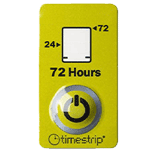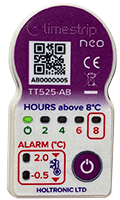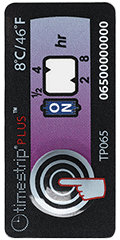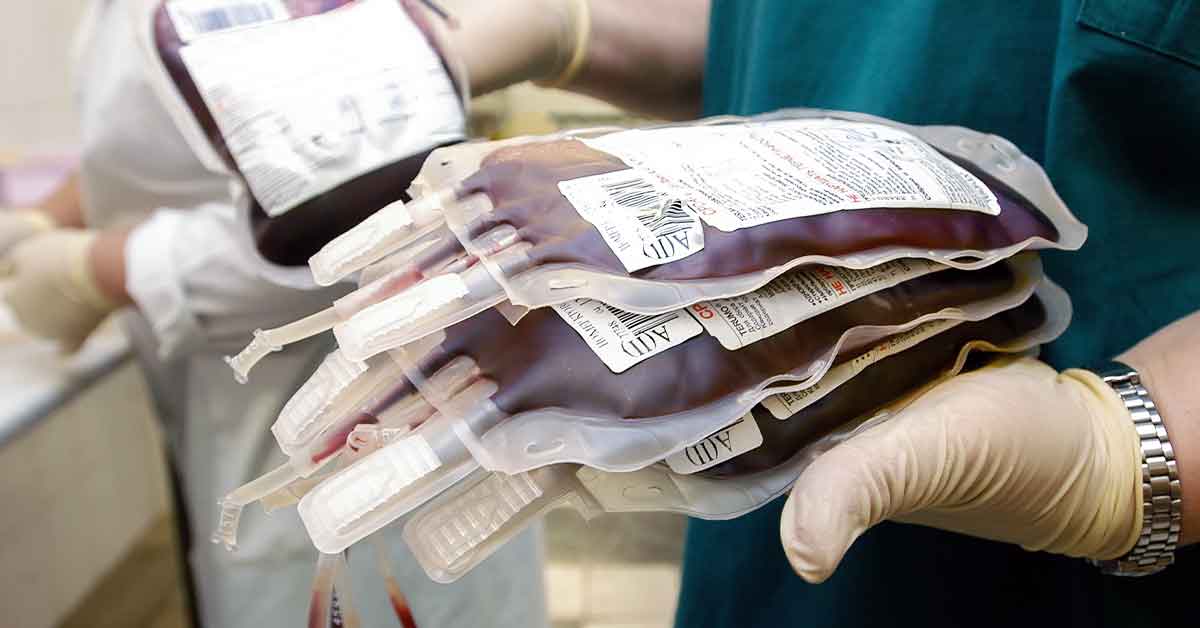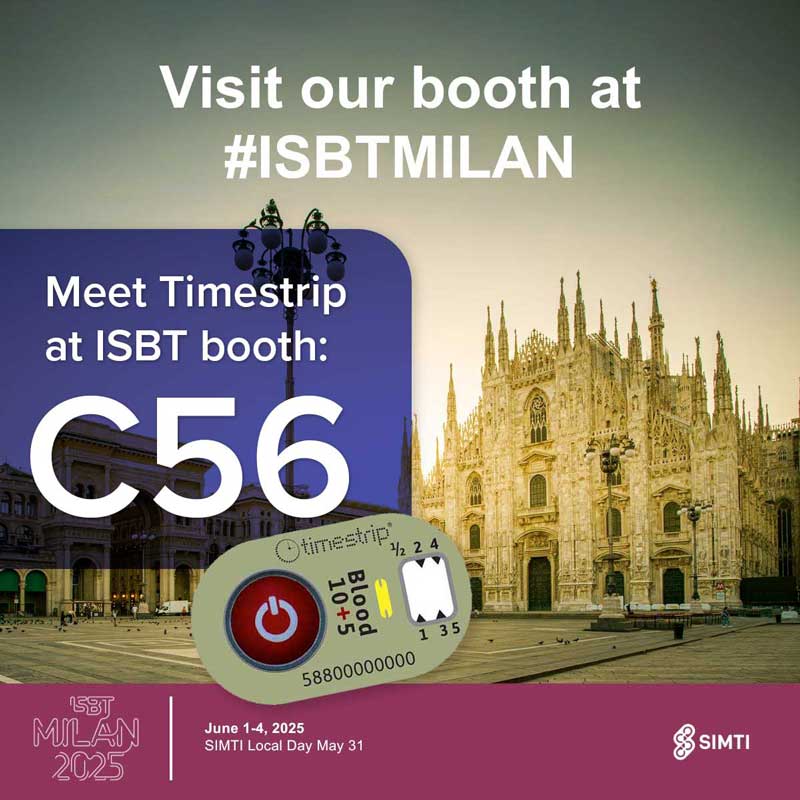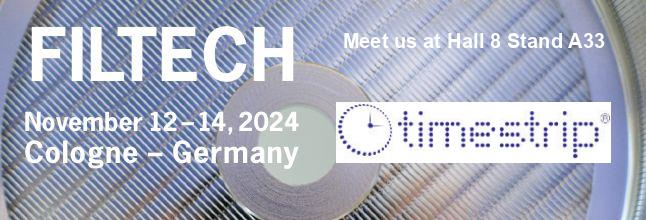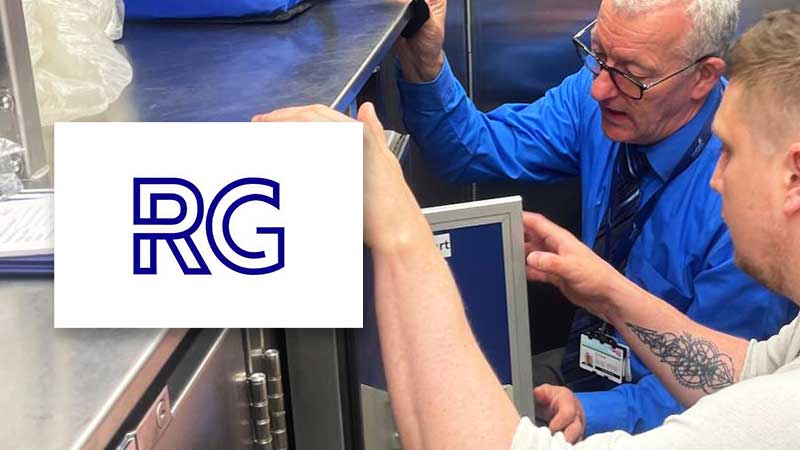
Blood Products Storage and Handling
The Overarching Principle: The Cold Chain
For blood products, the continuous maintenance of the required temperature range (‘cold chain’) is crucial - from the moment of collection, through processing, storage, transport and until the product is transfused. Any breach in this chain can compromise the integrity, safety, and efficacy of the blood product, potentially leading to:
- Loss of functionality: Components like clotting factors in plasma or the oxygen-carrying capacity of RBCs can be degraded.
- Bacterial proliferation: Especially critical for components stored at warmer temperatures (platelets, granulocytes), or if refrigerated products warm up.
- Physical damage: Freezing of red blood cells (RBC)s or thawing of frozen products can cause irreversible damage.
- Adverse transfusion reactions: Transfusion of damaged or contaminated blood can trigger severe patient reactions.
As a result, stringent protocols, specialized equipment (blood bank refrigerators, freezers, platelet agitators) and continuous temperature monitoring are essential steps in blood product management.
Each blood component has specific temperature requirements and deviations can lead to irreversible damage, rendering the product ineffective or even harmful.
Timestrip’s specially formulated liquid-based temperature and time indicators monitor packaged blood supplies, avoiding wastage and ensuring the quality of blood supplied to patients.
Timestrip blood bag labels Blood Temp 10 are designated as medical device FDA 510(k) approved indicator for the transportation of blood’ and provide an irreversible visual alert that a temperature breach has occurred.
As well as monitoring the transportation and storage of whole blood, Timestrip’s range of products covers specific uses, enabling the safe transportation of blood components: platelets, plasma and frozen blood products. This goes a long way to maximizing the usability of all these components.
Timestrip’s range of electronic products includes the Timestrip neo range of small, light indicators that show operation and breaches by a series of LED lamps. The Timestrip neo Multi can be reset and used up to five times. Custom ranges of temperature and time are available for specific applications.
Using temperature indicators at package (e.g. blood bag) level means that unused stocks may be returnable to stored provided they have not been exposed to elevated temperatures. Where temperature profiles may exist in large refrigerators, use of the small individual indicators can ensure that only affected products are discarded.
Red Blood Cells
- Optimal Temperature: RBCs are typically stored at a refrigerated temperature of 2°C to 6°C (36°F to 43°F).
- Why this range is crucial:
- Slows metabolism: This cold temperature slows down the metabolic activity of the red blood cells, preserving their viability and extending their shelf life (typically up to 42 days with modern anticoagulant-preservative solutions). Ref 1.
- Prevents bacterial growth: Warmer temperatures significantly increase the risk of bacterial proliferation within the blood unit. Even a short exposure to higher temperatures can lead to rapid bacterial growth, which can be life threatening if transfused.
- Prevents haemolysis (cell rupture): Temperatures below 2°C can cause the water inside the red blood cells to freeze, leading to the formation of ice crystals. These crystals can rupture the cell membranes (haemolysis), releasing haemoglobin into the plasma. Transfusing haemolyzed blood can cause severe complications for the patient, including kidney failure, transfusion reactions and even death. Ref 2.
- Maintains oxygen-carrying capacity: Improper storage can lead to biochemical changes that impair the red blood cells' ability to transport oxygen and carbon dioxide effectively.
Platelets
- Optimal Temperature: Platelets have unique storage requirements and are typically stored at room temperature, specifically 20°C to 24°C (68°F to 75°F), with continuous gentle agitation. Ref 3.
- Why this range and agitation are crucial:
- Maintains functionality: Unlike RBCs, cold temperatures cause irreversible changes to the platelet membrane, leading to their rapid clearance from circulation (i.e., they won't function effectively to clot blood). Room temperature storage maintains their clotting function.
- Prevents clumping (aggregation): Continuous agitation is essential to prevent platelets from clumping together, which would render them ineffective for transfusion.
- Higher risk of bacterial contamination: Because platelets are stored at room temperature, they have a higher risk of bacterial growth compared with refrigerated blood products. Consequently, platelets have a shorter shelf life (typically 5-7 days) and often undergo bacterial screening or pathogen inactivation procedures. Ref 4.
- Metabolic activity: Platelets remain metabolically active at room temperature, requiring adequate oxygen and nutrients from their suspension medium (plasma or platelet additive solution). Deviations from the optimal temperature can accelerate their metabolism and aging, or lead to hypoxia if agitation is interrupted.
Fresh Frozen Plasma (FFP)
- Storage Temperature: -18°C or colder (often -25°C or below, or even -30°C to -65°C, depending on the specific product and guidelines).
- FFP is the liquid portion of blood, separated from the cells and rapidly frozen. It contains all the clotting factors (coagulation proteins), including the labile (heat-sensitive) factors V and VIII, as well as other plasma proteins. It is used to treat bleeding disorders, reverse anticoagulant effects (e.g., from warfarin), and replace missing coagulation factors in patients with liver disease or massive haemorrhage.
- Why temperature is crucial: Freezing rapidly at these very low temperatures is essential to preserve the activity of the labile clotting factors. If FFP is not frozen quickly enough or if it thaws even partially, these factors will degrade, rendering the plasma ineffective.
- Post-thaw handling: Once thawed (typically in a water bath at 30-37°C), FFP must be transfused immediately or within a very short timeframe (e.g., 24 hours if stored at 1-6°C, but factor activity will decline). It should never be refrozen after thawing.
Cryoprecipitate (Cryo)
- Storage Temperature: -18°C or colder (often -25°C or below).
- Cryoprecipitate is a concentrated portion of plasma rich in specific clotting factors, including fibrinogen (Factor I), Factor VIII, von Willebrand factor (vWF), and Factor XIII. It's prepared by slowly thawing FFP at refrigerator temperatures (1-6°C) and collecting the cold-insoluble precipitate.
- Uses: Primarily used to treat conditions like disseminated intravascular coagulation (DIC), severe bleeding with low fibrinogen levels, and specific deficiencies of fibrinogen, Factor VIII (though Factor VIII concentrates are more common now), or vWF.
- Why temperature is crucial: Like FFP, freezing is necessary to preserve the activity of its concentrated clotting factors.
- Post-thaw handling: Once thawed, cryoprecipitate should be transfused immediately and generally within 4-6 hours if pooled. It cannot be refrozen.
Whole blood
- Storage Temperature: 2°C to 6°C (36°F to 43°F).
- Unseparated blood containing red cells, plasma, platelets, and white blood cells, while historically common, it's less frequently transfused now as individual components are often more targeted.
- Uses: Primarily in acute, massive haemorrhage (e.g., trauma, surgical emergencies) where rapid volume replacement and oxygen-carrying capacity are critical.
- Why temperature is crucial: Similar to red blood cells, this temperature range slows metabolism and bacterial growth. However, due to the presence of platelets and white blood cells, whole blood has a shorter shelf life than packed RBCs unless specific preservative solutions are used. If it is intended to be further processed into components like FFP, it must be frozen within specific timeframes (e.g. 8 hours for FFP).
Granulocytes (Apheresis)
- Storage Temperature: 20°C to 24°C (68°F to 75.2°F), without agitation.
- What it is: A concentrate of white blood cells, specifically granulocytes (neutrophils), collected by apheresis.
- Granulocytes are used for patients with severe neutropenia (very low neutrophil count) who have life threatening bacterial or fungal infections that are unresponsive to antibiotics. These are generally transfused only in very specific and severe clinical situations.
- Why temperature is crucial: Granulocytes are highly metabolically active and fragile. They are stored at room temperature to maintain their viability and function, but they have an extremely short shelf life, usually less than 24 hours from collection. Refrigeration would quickly render them non-functional. They are generally transfused as soon as possible after collection.
General Importance of Temperature Control for All Blood Products:
- Patient safety: The primary concern is patient safety. Improperly stored blood products can lead to severe adverse transfusion reactions, infections, and reduced therapeutic benefit. Ref 5.
- Product viability and efficacy: Maintaining the correct temperature ensures that the blood components retain their functional properties, enabling them to perform their intended roles (e.g., oxygen transport by RBCs, clotting by platelets).
- Regulatory compliance: Blood banks and healthcare facilities are subject to strict regulatory frameworks (e.g., AABB, FDA, EMA guidelines) that mandate precise temperature control for blood products.
- Minimizing waste and cost. Blood products are a precious and expensive resource. Proper temperature control minimizes spoilage and ensures that usable units are available when needed, preventing costly discards.
- Cold chain integrity: From collection to transfusion, blood products must be maintained within their specified temperature ranges. The cold chain requires specialized blood bank refrigerators, freezers, incubators and insulated transport containers with continuous temperature monitoring systems and alarm protocols.
- Long-term storage of other components: Other blood components, like plasma and cryoprecipitate, are stored frozen at much lower temperatures (e.g. -18°C or colder) to preserve labile clotting factors and proteins for extended periods. Once thawed, they also have specific temperature and usage timelines.
Blood is an extremely precious commodity. In essence, meticulous blood temperature management throughout the entire handling and transportation process of blood products is a cornerstone of transfusion medicine, directly impacting the quality, safety and life-saving potential of these vital medical resources.
Using Timestrip Blood Temp indicators is a simple, low cost approach to avoiding compromised supplies or unnecessary discarding of viable blood supplies.
Note: This note contains indicative content only. Before using any information given, practitioners are advised to check local regulations and current best practice guidelines. No liability can be accepted for consequences arising from use of this information.

